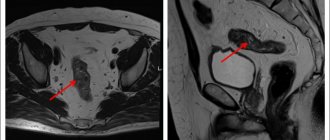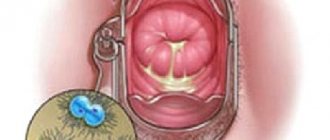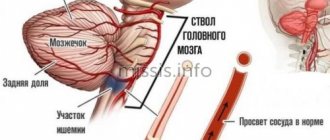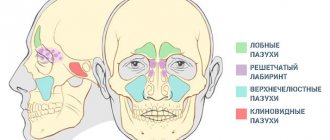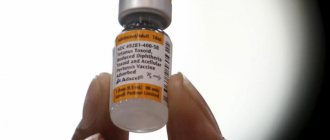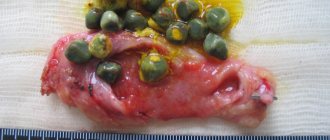The first signs of HIV disease: symptoms in the early stages
In men, early symptoms include red or discolored spots on the skin. They are usually visible after 12-14 days from infection. In rare cases, when the immunity of the infected person has been weakened by cancer, frequent exacerbations of herpes virus infection, etc., the first signs can be observed 14-21 days from the moment of infection. The rash comes in the following varieties.
- Petechial rash. Petechiae are tiny spots on the skin caused by hemorrhages.
- Urticarial rash. The rash resembles hives.
- Papular rash. Signs are skin formations that are empty inside.
Within a few weeks, the first signs of HIV disease appear, which are similar to ARVI, influenza and acute respiratory infections. The body temperature increases, the lymph nodes in the groin, armpits and neck become large, regular headaches appear (other possible causes of headaches are written here). Other symptoms in men at an early stage are deterioration in well-being and mood, development of a depressive state.
The body becomes exhausted as it tries to fight the pathogen, which leads to the desire to sleep. The brain lacks energy, the first signs of which are a decrease in the efficiency of intellectual activity. The liver and spleen increase in size. Also, HIV infection in men is determined by such a symptom as diarrhea.
Further course of the pathology
Later, in patients with HIV infection, internal organs are affected by different types of bacteria, viruses and fungi. For example, pneumonia, secondary or complicated situations of herpes zoster are often observed. In later stages, when the immune system completely fails, severe immunodeficiency appears. At this stage, those infected develop the following severe infections:
- toxoplasmatosis,
- Neumocystis pneumonia,
- tuberculosis,
- extrapulmonary critococcal infection.
But if the disease is detected on time and treatment is started immediately, then a decline in the immune system and clinical manifestations may not appear. In this case, the woman’s immunity remains at the same level by suppressing the spread of the virus through medication. Therefore, the most correct approach is regular checks and the beginning of competent treatment. Thus, health and beauty will be preserved for a long time. It is also important to follow all the doctor’s recommendations, undergo examinations and tests several times a year.
Many people are interested in how long it takes for HIV to be detected ? To obtain the correct answer from the test, 3 months must pass from the date of infection. In rare situations, the manifestation of antibodies takes up to six months. And if after 3 months the result is negative, but you are sure that you are infected, then it is better to repeat it after six months.
It is important to realize that the appearance of HIV infection is not the end of life or death. There is no need to give up and do nothing. This is just a new stage at which you need to reconsider your everyday lifestyle and make every effort to prevent the disease from winning!
Symptoms of the disease after a month
In the body of men, the virus continues to develop, so symptoms at an early stage appear more clearly. However, during the incubation period, a serological window occurs when even specialized laboratory tests cannot determine the first signs.
The first signs of HIV are similar to other diseases. The presence of the disease is confirmed based on information obtained through tests. It is necessary to contact diagnostic centers at an early stage at the following first signs or symptoms.
- A slight and prolonged increase in normal body temperature.
- Loss of body weight in the absence of an important factor.
- Muscle weakness, runny nose, sore throat and other signs of a cold.
- Long-term infectious problems (therapy is carried out by an infectious disease specialist).
- Rash on the body, particularly in the armpit area.
- Psychological problems: depression, apathy and irritability (the help of a psychologist is recommended).
- Recurrent mycosis (fungal infection) of any location.
- Constant herpes and lichen.
The symptoms resemble other diseases, however, in any case you should consult a doctor.
In case of a positive diagnosis, therapy will be prescribed that will help the man support the immune system at an early stage of the problem and avoid many serious problems.
The first signs of HIV infection
Some people develop an acute infection, and then the first symptoms of HIV are a rash all over the body, plaque on the nasopharyngeal mucosa, sore throat, chills, and swollen lymph nodes. Such women are often diagnosed with infectious mononucleosis, acute respiratory infections or toxicosis-allergic reaction. This period of the disease is characterized by the presence of a positive or questionable ELISA result for VIS and often a negative or questionable immunoblot, since antibodies to some viral proteins have already been created, but not all; as a result, immunoblotting gives a negative answer.
To confirm the diagnosis at the zero stage of the disease, you need to do a blood test using PCR for HIV RNA.
The duration of acute infection usually lasts from 2 to 6 weeks. Subsequently, the symptoms regress, and HIV infection enters the stage without symptoms. And if at the stage of acute infection the disease is not detected (symptoms are not noticeable, the doctor did not show attentiveness during the examination, the patient did not inform about the likely risks), then in the future, detection of HIV infection is possible either by accident or when complaints arise. T-lymphocytes suffer the most from the influence of HIV in the patient’s body. As a result, the virus spreads throughout the body, it destroys T-lymphocytes, and their number decreases. In a healthy person, the presence of CD4 T lymphocytes in 1 micrometer of blood ranges from 600 to 1500 cells. For those who have HIV, the number may decrease to 300 cells or even 0. This decrease does not happen immediately.
How the disease develops: main stages and timing of manifestation
HIV in men has several stages. Let us stop and briefly characterize the symptoms of each of them: from the early stage to the final stage.
- First stage . The pathogen enters the body. At an early stage, the first cells are affected by the infection.
- Incubation stage. The duration of the early stage is from 3 months to six months. There are so few antibodies that it is impossible to determine the presence of the disease. Other early signs are also mild.
- Stage of primary manifestations . Continues for several years after the formation of antibodies in the body. The first signs are that a person is sick with the flu several times or has similar problems of a protracted nature - up to 2 weeks.
- Latent stage . Duration - 3-20+ years. Men do not show any symptoms. The pathogen slowly kills the immune system.
- Secondary diseases. Various diseases develop, including infectious ones. They have a complicated course, since the immune system offers virtually no resistance.
- AIDS. The final stage, which lasts several months or years. Symptoms are oncological and infectious problems with a complex course. Diseases often appear that are not typical for an organism with a healthy immune system.
If you take into account the first signs and identify the disease at an early stage, it is easier to fight it.
Classification of the disease by stages
During the course of the disease, it is customary to distinguish five successive stages. Each of them has its own specific characteristics. Source: Structural biology of HIV. B. G. Turner, M. F. Summers. Howard Hughes Medical Institute and Department of Chemistry and Biochemistry University of Maryland Baltimore County. https://www.sciencedirect.com/science/article /abs/pii/S0022283698923543?via%3Dihub.
The incubation stage lasts from the period when the virus enters the body until a reaction to it appears (in the form of the symptoms described above) or the production of antibodies. The duration of this stage is from 3-4 weeks to 3 months, in rare cases longer. During this period, viral particles actively spread throughout the body and multiply, but there are no clinical manifestations, HIV is not detected by laboratory tests, but the person is contagious.
The stage of primary manifestations begins approximately 3-6 months from the moment of infection. The virus continues to actively multiply during this period, and the immune system actively reacts to its presence by producing antibodies and clinical symptoms. During this period, the infection can be detected by laboratory examination: a specific test for HIV is performed. During this period, there may be no complaints, or periods of low-grade fever, skin rashes, lymph node reactions, candidiasis, relapses of herpes infection, and pneumonia may occur. The duration of acute HIV infection is 12 months from the moment antibodies appear.
The subclinical stage of infection is characterized by a slowdown in the process of virus reproduction and active synthesis of antibodies to existing particles. Among the leading symptoms are enlarged lymph nodes. The duration of the stage is about 5-7 years, sometimes it can extend to 10-20 years.
The stage of secondary diseases is characterized by the constant multiplication of viral particles, the death of the population of CD4 lymphocytes with the gradual depletion of the immune system resource. This leads to the formation of opportunistic infections (candidiasis, tuberculosis, herpes zoster) and oncological processes (Kaposi's sarcoma). The duration of the stage depends on the activity of treatment of secondary pathologies and the characteristics of the immune system.
The AIDS stage completes the development of the infection. Typically, the development of lesions of the nervous system, secondary severe infections and tumors, which pose a threat to life and occur as generalized processes. Without treatment, AIDS occurs approximately 10-12 years after infection.
How is HIV different from AIDS?
Sometimes people do not understand the difference between HIV and AIDS and equate them. However, there is a big difference between these problems regarding the future life prospects of men.
If you start treating the first one in time, then you will be able to avoid the second one. HIV infection at an early stage leads to a decrease in the efficiency of the immune system. It can be determined through analyzes and tests after suspicion at the first signs of the disease. AIDS is a syndrome in which the body has a weak immune system.
The immunodeficiency virus enters lymphocytes, where it multiplies. This is an early stage of the disease. The cells of the immune system quickly die, and the men’s body does not have time to restore them in the required quantity - these are the first, but serious signs of a problem. If left untreated, over time there will be less than 200 lymphocytes in one milliliter of blood - and this is AIDS. Modern medicine does not allow us to completely get rid of the pathogen. However, the activity of the latter can be suppressed and a long life can be enjoyed.
Some patients undergo antiviral therapy for 30 years and remain relatively healthy.
This significant difference between HIV and AIDS gives many men a chance.
Complications
Much attention is paid to the treatment and prevention of infection with the human immunodeficiency virus due to the fact that the infection leads to various severe complications associated with the development of an immunodeficiency state.
Candidiasis of the oropharynx, esophagus and respiratory tract occurs against the background of activation of yeast-like fungi of the genus Candida. Typical symptoms include discomfort when swallowing, sore throat, the appearance of white deposits on the mucous membranes of the mouth, and an increase in temperature to subfebrile levels.
Shingles is a reactivation of the varicella zoster virus, which is stored for life in the nerve ganglia after the initial infection. Itchy blistering rashes appear along the nerve trunks in the back and chest, which form painful and itchy crusts.
Tuberculosis infection is caused by mycobacteria entering the body. Characterized by sweating, cough, fever, shortness of breath. In HIV-positive people, tuberculosis is prone to a severe generalized course, affecting organs other than the lungs.
Kaposi's sarcoma often occurs - a malignant lesion with multiple foci, originating in the vascular area. The skin, mucous membranes, internal organs and lymphatic capillaries are mainly affected.
Pneumocystis pneumonia is a severe lesion of the lung tissue, typical of patients with immunodeficiencies. It is manifested by high fever, severe shortness of breath and severe general condition.
Cerebral toxoplasmosis is a parasitic pathology in which people with immunodeficiencies develop pathological lesions in the brain area, leading to neurological disorders (seizures, headaches, cognitive impairmentSource: Molecular epidemiology of HIV. AJ Kandathil, S Ramalingam, R Kannangai, Shoba David , G Sridharan. Indian J Med Res, 2005 Apr;121(4):333-44. https://pubmed.ncbi.nlm.nih.gov/15817947/.
HIV treatment
The doctor determines how advanced the disease is. If the patient is at an early stage, then drugs are prescribed to combat the virus. If the disease is at the last stage, means are used to combat concomitant diseases. Doctors choose highly active antiretroviral therapy as an effective treatment for HIV infection. Treatment includes the use of a complex of drugs, which are divided into 5 groups:
- nucleoside reverse transcriptase inhibitors;
- protease inhibitors;
- non-nucleoside reverse transcriptase inhibitors;
- fusion inhibitors;
- integrase inhibitors.
The volume and number of doses is determined for men individually. Doctors take into account factors such as:
- the state of CD4 lymphocytes - cells of the immune system;
- the degree of development of the virus in the body;
- symptoms of the disease;
- complications.
Therapy is usually prescribed by immunologists or infectious disease specialists. The patient is prescribed a full course of examination. Based on the information received, the doctor determines treatment. The patient visits a medical facility for examination and monitoring of the condition. Subsequently, treatment of HIV infection with drugs continues throughout the man’s life. Taking into account the objectives of treatment, therapy is divided into three areas.
- Etiotropic approach. Another name is antiretroviral therapy. The drugs slow down the development of the virus. The most popular approach to combating the virus at any stage of the disease.
- Pathogenetic approach. The goal is to improve the efficiency of the immune system. Prescribed at the final stage of the disease. Pharmacological agents are used, in particular immunomodulators.
- Symptomatic approach. Therapy is relevant at the stage of AIDS. Prevents the development of symptoms (in particular infectious processes) and ensures the normal functioning of the body.
HIV is characterized by resistance - the ability to resist the effects of medications. In order to ensure the effectiveness of treatment, the doctor systematically examines the man. For a specialist, the level of CD4 lymphocytes and the development of the virus in the body are important. If these indicators worsen, then the doctor changes the therapy.
Treatment with 1 or 2 drugs is not effective. The virus is quickly modified and does not die due to the action of active substances. The doctor prescribes at least 3-4 medications. The patient takes medications at strictly defined times.
Doctor's advice
A blood test for HIV is mandatory during medical examinations - routine at work, medical examination, and medical examination. This analysis is taken in case of admission to a hospital of any profile, as well as when a pregnant woman is registered with the LCD. Every year, an increasing number of the population is diagnosed with HIV, which significantly increases the chances of starting treatment in the early stages of the disease.
Victoria Druzhikina Neurologist, Therapist
How to treat HIV
If an infection is detected, the patient is registered with the AIDS Center and is constantly monitored by an infectious disease specialist. Today, a cure for HIV has not yet been developed that could completely suppress the infection. But clinical recommendations for the management of patients with HIV have been developed and put into practice, and antiretroviral drugs are used to prevent the development of AIDS and significantly prolong life. They are issued free of charge after a full examination and continuous monitoring by a doctor. Source: HIV infection: issues of therapy. Aronin Steve I. Kazan Medical Journal No. 6, 2005. p. 433-450.
Taking antiretroviral therapy suppresses the process of reproduction of viral particles, which prevents the infection from destroying the immune system. Patients who constantly take drugs do not transmit the infection even during sexual intercourse without condoms, and do not infect children during pregnancy and childbirth.
It is important to use the drugs selected by the doctor for life; the effectiveness of treatment is constantly monitored and patients are monitored to exclude side effects from the drugs.
HIV treatment regimen and cost
There are standards for the treatment of HIV infection (see list of references). Drugs for treatment:
- Stavudin;
- Lamivudine
- Nevirapine;
- Efavirenz;
- Etravirine
- Emtricitabine;
- Indinavir;
- Maraviroc;
- Tenofovir;
- Zidovudin et al.
Initial regimen: tenofovir + lamivudine (or emtricitabine) + efavirenz. If it is impossible to use - zidovudine + lamivudine + efavirenz, zidovudine + lamivudine + nevirapine, tenofovir + lamivudine (or emtricitabine) + nevirapine
A combination of drugs is necessary to achieve a positive result from treatment. The effectiveness of the therapy is assessed by the dynamics of the immune status.
HIV infection must be treated - this effectively prolongs life, returning it almost to its original level. During therapy, the formation of protective cells increases, which prevents the disease from developing and causing complications, including death. The earlier an HIV-positive status is detected and treatment is started, the higher the chances of returning to your previous life.
The cost of treatment per patient per year depends on the treatment regimen chosen by the doctor. It ranges from 20 to 370 thousand rubles; if you have a compulsory medical insurance policy, SNILS and a passport, the purchase and issuance to the patient is carried out at the expense of budget funds.
Drugs have been developed and are being tested that are taken in the form of 1 morning tablet, rather than 3-5. A vaccine is being developed to completely destroy the virus. New drugs are in the testing stage.
Prevention
There is no vaccine or effective preventive medication against HIV. Therefore, prevention consists of following simple safety measures:
- it is necessary to practice only safe sex (with a condom, a trusted sexual partner);
- for various manipulations, it is important to use only sterile instruments;
- annual HIV testing is important;
- mandatory examination before planning pregnancy, during registration and before childbirth.
Sources:
- HIV infection: issues of therapy. Aronin Steve I. Kazan Medical Journal No. 6, 2005. p. 433-450
- The impact of HIV infection on the quality of life of people living with HIV/AIDS. Tursunov R.A. Avicenna Bulletin No. 1, 2013. pp. 138-148
- Prevalence of HIV infection in Russia. Pirogova I.A. Bulletin of the Council of Young Scientists and Specialists of the Chelyabinsk Region No. 4, 2017
- Structural biology of HIV. B. G. Turner, M. F. Summers. Howard Hughes Medical Institute and Department of Chemistry and Biochemistry University of Maryland Baltimore County. https://www.sciencedirect.com/science/article/abs/pii/S0022283698923543?via%3Dihub
- HIV virology and pathogenetic mechanisms of infection: a brief overview. Emanuele Fanales-Belasio, Mariangela Raimondo, Barbara Suligoi, Stefano Buttò. Ann Ist Super Sanità 2010 | Vol. 46, No. 1:5-14. https://pubmed.ncbi.nlm.nih.gov/20348614/
- Molecular epidemiology of HIV. AJ Kandathil, S Ramalingam, R Kannangai, Shoba David, G Sridharan. Indian J Med Res 2005 Apr;121(4):333-44. https://pubmed.ncbi.nlm.nih.gov/15817947/
Routes of infection
Getting HIV is not that easy. The virus does not enter the body through airborne droplets or a handshake. The main routes of transmission of HIV infection are as follows.
- Sexual intercourse with a person infected with HIV.
- The use of non-sterile medical instruments, in particular needles.
- Blood transfusion from a sick donor.
- Ingestion of contaminated blood or other fluid from a sick person into a wound.
- Intravenous administration of drugs with one syringe with an HIV patient.
- From mother to child.
According to statistics, in Russia every 40th man aged 25 to 40 is infected with HIV.
The number of HIV-infected men is increasing every year, including in the Kirov region.
Growth is usually associated with the following factors:
- men have more sexual partners than women;
- seek sex services more often;
- tend to abuse alcohol and drugs in combination with sex;
- have a high risk of infection through same-sex sexual contacts;
- rarely think about their health, especially reproductive health.
WHAT DO YOU NEED TO KNOW ABOUT HIV?
We know what computer viruses are and how to maintain the “health” of your electronic assistant, but what is HIV and how to maintain your health?
HIV is a human immunodeficiency virus that destroys the immune system. He cleverly bypasses the body’s defense systems, gets to the “command post” and, having captured it, forces the protective cells to produce viral copies. As a result, the immune system stops working. The body becomes vulnerable to infections and harmful environmental influences.
As a result, the disease, which is based on immunodeficiency, enters the final stage - AIDS (acquired immunodeficiency syndrome). At this stage, the immune system is so weakened that diseases that develop against the background of HIV infection lead to death.
HIV infection occurs in only three ways:
- sexual (any sexual contact without using a condom);
- through blood (through a non-sterile syringe/needle/drug container; through a non-sterile instrument when applying a tattoo/piercing; infection is possible if epidemiological safety rules for blood transfusions are violated);
- from mother to child (in utero, during childbirth, through breast milk).
THOSE WHO KNOW LITTLE ABOUT THE WAYS OF HIV TRANSMISSION ALWAYS RISK MORE!
The predominant route of HIV infection is sexual — at the end of 2018, about 70% of all cases of HIV infection detected in the Kirov region were due to unprotected sexual contacts.
Infection can occur through all forms of sexual contact. anal contact is especially dangerous
since this is the most traumatic type of sexual activity. The rectal mucosa contains cells that are susceptible to HIV, and if microtraumas appear on the mucosa, the risk of the virus entering the blood increases significantly. Therefore, the “passive” partner is at high risk of infection.
However, the “active” partner is also at risk, as he comes into contact with mucous membranes and blood.
The next highest risk is unprotected vaginal intercourse.
The likelihood of infection in this case increases with damage to the mucous membranes of the genital organs, during sexual contact during menstruation, in the presence of inflammatory diseases of the genitourinary system or infections.
During oral contact
the risk of infection is lower than with the first two forms, since the concentration of the virus in saliva is very low. However, if there is blood in the partner's saliva (due to damage to the oral mucosa), the risk of infection increases significantly.
THE GREATER THE NUMBER OF SEXUAL PARTNERS, THE HIGHER THE RISK OF HIV INFECTION!
The fear of contracting HIV infection becomes stronger if you know that one of your friends or acquaintances is infected with the virus. However, most fears are unfounded.
It is important to know that HIV is not transmitted
through saliva, sweat, tears, urine. Handshakes, kisses, caresses and hugs are safe. Coughing, sneezing, or sharing utensils, bedding and clothing with an HIV-infected person does not transmit the virus. It is safe to visit a pool, bath, or sauna together with an HIV-positive person. Mosquitoes also do not carry the virus, so their bites are not dangerous.
HOW TO FIND OUT IF YOU HAVE HIV?
It may take 5-7 years from the moment of infection to the clinical manifestations of the disease. During this time, a person feels well, may not be aware of the disease and infect his partner.
HIV test,
The only way to determine whether the virus is in the body is by detecting antibodies. They are specific to each pathogen and are produced in the body in response to the penetration of the virus.
It takes from 2 weeks to 3 or even 6 months to produce antibodies (in rare cases, up to a year). When the virus is already in the body, and there are not enough antibodies yet, the HIV test will be negative. This period is called the "window period". Therefore, the test must be repeated after 2-3 months.
STI. ANOTHER HEALTH HAZARD
One of the most unpleasant emergency situations on the love front is STIs.
STIs are sexually transmitted infections. Many of them do not reveal themselves to be anything for many months and even years! If you want to be sure that you are healthy, you need to be tested for HIV and other STIs regularly, at least once a year!
When should you get tested?
Gonorrhea and trichomoniasis can be detected within 5-7 days after infection. Syphilis - in 3-4 weeks. Well, the most dangerous virus - HIV - is masked for at least 2-3 months.
STIs may not manifest themselves for a long time, but if any of the following symptoms appear, you should immediately go to the doctor:
- itching, burning in the genital area;
- unusual discharge from the penis and anus;
- frequent and painful urination;
- neoplasms in the genital area (lumps, warts, growths);
- ulcers in the genital area.
These symptoms may indicate the presence of an STI. Here are just some of the infections known to medicine:
- syphilis: sexually transmitted; 3-4 weeks after infection, a rash may appear on the body; if left unchecked, the infection can reach the brain and central nervous system;
- gonorrhea: transmitted sexually and, extremely rarely, through household means; typical signs are yellowish or greenish discharge, burning and itching when urinating; the consequences of gonorrhea can be infertility, meningitis, heart disease, etc.;
- trichomoniasis: infection occurs through sexual and household routes; signs are typical for many STIs - discharge from the penis and pain when urinating (sometimes there may be no symptoms); possible consequences - prostatitis, tumors (including malignant);
- chlamydia: the route of infection is the same as for trichomoniasis and gonorrhea; is usually asymptomatic; Among the consequences are infertility, inflammation of the prostate gland;
- genital warts: a very contagious viral disease, sometimes simply touching the affected skin is enough to become infected; some types of papillomas (warts) are harmless, while others can lead to cancer; It is quite easy to remove warts, but the virus itself cannot be removed from the body;
- genital herpes: transmitted sexually, even a condom does not protect against it; Painful ulcers often appear in the genital area, which heal after 2-4 weeks, but it is no longer possible to get rid of the herpes virus.
CONDOMS ARE BEST FRIENDS!
...AND YOU NEED TO KNOW YOUR FRIENDS BY FACE!
Almost all modern condoms are made from latex - the milky sap of the Hevea tree.
The times when there was only one type of contraceptive are long gone. Today there are all the conditions to diversify your intimate life (classic, textured, flavored, contour, ultra-thin, etc.).
The only thing that remains unchanged is the rule that all sexual contacts must be protected!
There is no vaccine for HIV infection!
Many STIs also cannot be cured. So you can’t do without a condom and a responsible attitude towards choosing a sexual partner! In addition, a high-quality condom, if used correctly, will prevent unwanted pregnancy.
About quality!
It is important to choose the right condoms! To purchase quality ones, you need to know the following simple rules.
Firstly, high-quality condoms cannot be cheap. A suspiciously low price may indicate that the product has not passed the necessary control. However, inexpensive condoms can also be of high quality, so you should pay attention to the presence of special marks on the packaging - GOST, ISO, “passed electronic testing.”
Secondly, under no circumstances should you buy or use expired goods! Over time, latex breaks down and becomes unsuitable for protection against both unwanted pregnancy and STIs. The expiration date must be on each package (external and individual).
Thirdly, the integrity of the individual condom packaging is extremely important. In order to check this, it is enough to touch the packaging; a rolling air bubble should be detected in it. If it is missing, then the packaging is damaged and the condom cannot be used.
Fourthly, condoms should always come with instructions for use, which you should read in advance.
Correct use of a condom requires compliance with certain rules:
- put on the genitals only when fully erect;
- leave room for sperm (the elongated tip at the end - the sperm receptacle - is not made for beauty, but in order to prevent the condom from breaking at the moment of ejaculation);
- if necessary, use additional lubricant/gel (a deficiency can lead to rupture of the condom), but it is extremely important that these products are water-based (fat-containing gels and lubricants, oils, petroleum jelly, fatty creams destroy the latex structure);
- it is necessary to remove the penis immediately after ejaculation, holding the condom at the base (it is important to prevent the condom from slipping);
- if the condom breaks, it is necessary, while remaining calm, to wash the external genitalia with clean running water as soon as possible (the use of antiseptics can lead to irritation of the mucous membrane and increase the risk of HIV infection); If possible, it is recommended to seek specialist advice as soon as possible after a risk situation.
It is important not to forget about the rules for storing condoms!
Strong temperature changes should not be allowed in the places where they are located. This can lead to disruption of the latex structure. Condoms should be stored in a dry place at a temperature from 0 to +25 C away from direct sunlight. It is strongly recommended not to leave them in cars or trouser pockets!
How to protect yourself
Considering the main methods of HIV infection, doctors identify several simple rules for preventing the problem:
- Avoid casual sex. Most likely, you know a little about the sex life of a potential partner. In any case, use contraception. You can catch a dangerous virus as a result of traditional sex. But is it possible to become infected with HIV through oral or anal sex? Unfortunately, yes, so be as careful as possible.
- Use only new, sterile needles and syringes. This is often neglected by drug addicts, creating optimal conditions for the transmission of the disease. If you are donating blood or are on an IV in the hospital, make sure that the nurses only use new needles and syringes. Their inattention or your false economy are the causes of the problems.
- Be careful in beauty salons. Infection is only possible if the instruments are not disinfected and there is contact with blood. Check the first and contact experienced specialists.
- Be careful with blood transfusions. Trust only trusted medical institutions. Agree to a blood transfusion if there is no other alternative. See for yourself or ask your doctor to look at the donor’s medical record.
- Do not leave open wounds . An antiseptic and a sterile bandage prevent dust and fluids from an infected person from entering the wound. Do not be lazy to treat a small scratch yourself and seek qualified medical help in case of serious damage.
Simple rules can reduce the likelihood of catching a disease to almost zero.
AIDS prevention
There is currently no specific prophylaxis (vaccine) that can prevent HIV infection. Therefore, in accordance with the routes of infection listed above, a person should adhere to fairly simple life rules.
Back in the 12th century, the philosopher and physician Maimonides (Moshe ben Maimon) said: “Behave prudently - among thousands of people, only one dies a natural death, the rest die due to a reckless manner of being.”
It is in the interests of every sane person to maintain their health and prevent HIV infection. It should be remembered that the main danger of HIV infection is that the signs of AIDS may not appear for a very long time. Therefore, the patient often consults a doctor in the later stages of the disease.
In order to make sure that there is no threat to health and for the purpose of early diagnosis of the disease, you need to take tests for AIDS.
The CMD laboratory can conduct a full range of tests for HIV infection. You can take an AIDS test anonymously.
HIV tests, prices, when to get tested
Tests to detect antibodies to HIV are taken 3, 6 and 12 months after the suspected infection. To carry out the tests, you need to donate blood from a vein.
If the test is carried out in a state clinic under compulsory medical insurance, it is performed free of charge. If you apply on your own, this can be done in any private clinic, the average cost is 400 rubles.
Life expectancy with early diagnosis and treatment does not differ from the life expectancy of a person without HIV infection. After an AIDS diagnosis, the patient lives 5-10 years without antiviral therapy. In severe cases - even less.
If you have doubts about HIV infection or treatment for the disease, you can ask your question to an immunologist or infectious disease specialist online, without registration and on an anonymous basis.
Useful articles on the topic: How to improve spermogram Treatment of chlamydia in men Trichomoniasis in men Inguinal hernia in men Symptoms of gonorrhea in men Acute and chronic urethritis in men
This article has been verified by a current qualified physician, Victoria Druzhikina, and can be considered a reliable source of information for site users.
Bibliography
1. https://aidsvolgograd.ru/wp-content/uploads/2017/08/Clinical-protocols-HIV-2017.pdf 2. https://pharmacta.ru/d/2015-10-30_4994.pdf https: //www.rcrz.kz/docs/clinic_protocol/2015/Therapy/Infectious%20diseases/3%20HIV%20u%20adults.pdf
Rate how useful the article was
4.1 13 people voted, average rating 4.1
Did you like the article? Save it to your wall so you don’t lose it!
Basic mechanisms of development of HIV infection and AIDS
The main target of HIV is CD4 lymphocytes, which play an important role in the formation of human immunity. After initial infection, HIV remains in the person's body for the rest of his life. Constant multiplication of the virus (replication) occurs in the lymphoid organs throughout the entire period of HIV infection. As a result of the action of HIV, lymphoid tissue is destroyed, leading to immunity disorders and progressive depletion of the immune response to a variety of pathogens. Accordingly, the body, left without a protective immune barrier, becomes unable to resist even the most harmless diseases for a healthy person. AIDS develops - the final stage of HIV infection.
